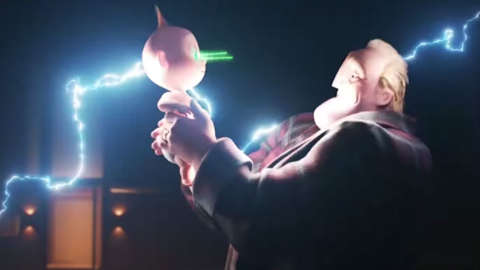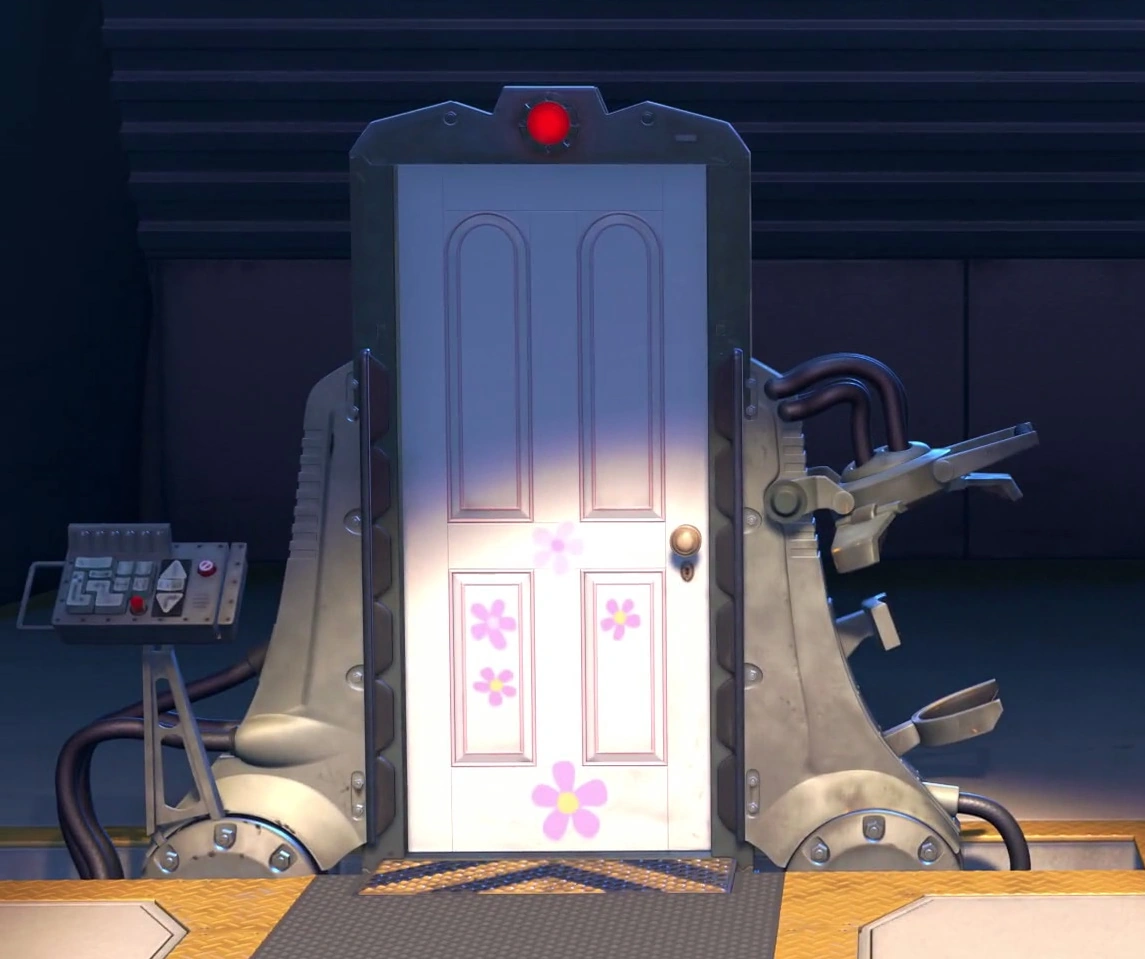cryotherapy, moist heat packs, paraffin, ultrasound, tens, nmes
1/38
There's no tags or description
Looks like no tags are added yet.
Name | Mastery | Learn | Test | Matching | Spaced |
|---|
No study sessions yet.
39 Terms

cryotherapy - goals/physiologic rationale (4)
limit edema formation
vasoconstriction helps decrease blood flow/bleeding → fluid filtration into interstitial tissue may be reduced
reduction in metabolic and vasoactive agents which contribute to inflammation
decrease pain
nerve conduction velocity decreased → threshold for pain perception is elevated
facilitate muscle relaxation
decreased activity in motor neurons and muscle spindle afferents
limits secondary hypoxic tissue injury
decreased metabolism and oxygen demand of living tissues
indications (9), contraindications (6), precautions of cryotherapy (7)
indications: acute/chronic pain, acute/subacute inflammation, edema/ecchymosis, myofascial trigger points, muscle spasm, ligament sprain, muscle strain, bursitis, tendonitis
contraindications: impaired circulation, over area with peripheral vascular disease, cold allergy (urticaria) or sensitivity/intolerance, reynaud’s phenomenon, infection, over an area with a regenerating peripheral nerve
precautions: avoid cooling over superficial nerve branches, very old/young patients, impaired cognition, open wounds, thermoregulatory disorders, hypertension, over areas of impaired sensation
3 sizes of cold pack + cover options
cervical, standard, oversized cold pack
wrapped in single wet towel or single dry pillow case (wet towel»)
order of sensations with cold modality
cold (uncomfortable level), stinging, burning, aching, numbness → stop icing when numbness occurs
duration of cold modality
depends on cooling modality and patient’s response → stop when numbing
ice massage ~ 5-10 min (4×6)
cold pack ~10 to 15 min

moist heat packs - goals/physiology (3)
decrease pain (increases pain threshold)
facilitation of local inflammatory mediators → vasodilation increases blood flow → increases dissipation of cellular waste products/inflammation/toxic soup → leads to decreased peripheral sensitization of nociceptors
facilitate tissue healing
by increased tissue oxygenation ← increased local metabolism causes oxygen dissociation from hemoglobin to double
increased blood flow brings oxygen and nutrients
increase muscle flexibility and decrease joint stiffness
decrease muscle spasm and smooth muscle tone ← decreased activity in motor neurons and muscle spindle afferents
increases soft tissue extensibility and elasticity
indications (7), contraindications (10), and precautions of moist heat packs(3)
indications: subacute/chronic inflammation (proliferative and maturation/remodeling after active inflammation has slowed or ceased), subacute edema, subacute and chronic pain, ROM restrictions, muscle guarding/spasm, subacute soft tissue tissues (ligs, muscle strain), trigger points
contraindications: acute inflammation or active inflammatory process (hemostasis and inflammation phase), acute injury, acute exacerbation of chronic condition, impaired circulation, impaired sensation, peripheral vascular disease, malignancy, infection, open wounds, superficial metal in area
precautions: cardiac insufficiency, pregnancy, poor thermoregulation
parameters of moist heat packs: size, target tissue
size: cervical, standard, oversized moist hot pack
target tissue: dependent on PP
layers of moist heat pack
2 layers of terrycloth covers, 1 towel
6-8 layers if hot pack placed over treatment area
8-10 layers if patient is lying
tissue level, target depth, duration of hot pack
skin/subcutaneous: 0.5-1.0 cm, 6-8 min
muscle: 1-2 cm, 15-30 min
*duration may vary on size of P, adipose tissue, patient position

paraffin - goals/physiology (3)
decrease pain (increase pain threshold)
facilitation of local inflammatory mediators ← vasodilation increases blood flow → increases dissipation of cellular waste products/inflammation/toxic soup AND leads to decreased peripheral sensitization of nociceptors
facilitate tissue healing
by increased tissue oxygenation ← increased local metabolism causes oxygen dissociation from hemoglobin to double
increased blood flow brings oxygen and nutrients
increase muscle flexibility and decrease joint stiffness
decreases muscle spasm and smooths muscle tone ← decreased activity in motor neurons and muscle spindle afferents
increases soft tissue extensibility and elasticity
indications (7), contraindications (10), and precautions (3) of paraffin
indications: subacute/chronic inflammation (proliferative and maturation/remodeling after active inflammation has slowed or ceased), subacute edema, subacute/chronic pain, ROM restrictions, muscle guarding/spasm, subacute soft tissue injuries (muscle/ligament strain), trigger points
contraindications: acute inflammation or active inflammatory process (hemostasis/inflammatory phases), acute injury, acute exacerbation of chronic condition, impaired circulation, impaired sensation, peripheral vascular disease, malignancy, infection, open wounds, superficial metal in area
precautions: cardiac insufficiency, pregnancy, poor thermoregulation
specific heat: paraffin vs water
paraffin has lower specific heat compared to water → less heat stored in system and less heat transferred to patient’s skin → high temp of bath but low risk of burns
thermal conductivity: paraffin vs water
paraffin has lower thermal conductiveity than water → less easily transfers heat compared to water
what has a high thermal conductivity vs low conductivity?
word bank:muscle, adipose, superficial metal (jewelry, paraffin)
muscle (tissues w/ high water content) have better thermal conductivity than adipose → adipose won’t conduct/transfer heat as well
superficial metal has higher conductivity → could burn skin
paraffin has lower conductivity than wter → paraffin’s efficiency to transfer heat will be less than water
temperature, target tissue, layers, patient position, and duration of paraffin
temperature: 52-53°C (125.6-127.4°F)
target tissue: affected tissue of distal extremities
layers: 6-8 dips
patient position: position of extremity when dipped into paraffin - comfortable: hand relaxed/fingers relaxed + not touching, extremity supported
duration: 10-15 minutes, up to 30 minutes

ultrasound - goals/physiology (3)
decrease pain (increase pain threshold)
facilitation of local inflammatory mediators by vasodilation to increase blood flow → increases dissipation of cellular waste products/inflammation/toxic soup AND leads to decreased peripheral sensitization of nociceptors
facilitate tissue healing
by increased tissue oxygenation ← increased local metabolism causes oxygen dissociation from hemoglobin to double
increased blood flow brings oxygen and nutrients
increase muscle flexibility and decrease joint stiffness
2-3°C increase in temperature → decreases muscle spasm and smooth muscle tone ← decreases activity in motor neurons and muscle spindle afferents
4°C increase in temperature → increases soft tissue and collagen extensibility and elasticity
indications (10) and contraindications (11) of ultrasound
indications: subacute conditions (proliferative/maturation/remodeling and beyond), decreased collagen extensibility, decreased muscle flexibility, decreased scar tissue mobility, decreased ROM, joint contracture, chronic inflammation, muscle spasm, pain, myofascial trigger points
contraindications: acute conditions (hemostasis/inflammatory), areas of decreased sensation, areas of decreased circulation, vascular insufficiency, thrombophlebitis, infection, eyes, reproductive organs, pregnancy, malignancy, epiphyseal areas in young children
parameters of ultrasound: desired temperature increase goal, frequency (depth), duty cycle, intensity, rate of temperature increase in muscle (°C/min), treatment duration (min), size of soundhead, speed of sound head, medium
desired temperature increase goal (°C/min):
2-3°C: chronic inflammation, pain, trigger points, muscle spasm
4°C increase extensibility of collagen and decrease joint stiffness
frequency (depth): 1 MHz = 2-5 cm and deep; 3 MHz = 1-2 cm and superficial
duty cycle: 100%/continuous, pulsed (10%, 20%, 50%)
intensity: 0.5, 1.0, 1.5, 2.0 W/cm²
rate of temperature increase in muscle (°C/min): provided in chart; dependent on intensity and frequency
tendons, ligaments, and scar tissue heat 2x faster than values provided in chart
treatment duration (min): desired temp increase (°C )/ duty cycle x rate of heating (°C/min)
to avoid risk of excessive heat, min. duration of US no less than 5 min and max 15 min for optimal efficiency of heating modality
size of sound head: varies by machine - 1 cm², 2 cm², 5 cm², 10 cm²
treatment area should no be no longer than 2x the size of the sound head
speed of sound head: 4 cm/sec
medium: gel or water

tens - goals/physiology (2)
reducing pain via gating mechanism/gate control theory
tens increases input of the cutaneous afferents (AaAb sensory fibers) to WDR cells which are located in the dorsal horn of the spinal cord. they compete with nociceptive afferent input (Ad and C) to the WDR cell
if the inhibition from Aa and Ab fibers is greater than the excitement from the C and Ad fibers, then the sum of stimulation will favor inhibiting the WDR cell, and pain perception will be decreased
gate control theory of pain
WDR cells are located in dorsal horn of spinal cord
firing of WDRs can be interpreted as pain by CNS
WDRs receive excitatory input from nociceptors
cutaneous afferents cause an overall inhibitory input to WDR → decreased excitation of the WDR cells
indications (1), contraindications (8), and precautions/considerations of tens (4)
indications: pain - (RA, OA, trigger points, myofascial pain, acute inflammation, post-op pain, skin debridement)
contraindications: demand pacemaker or defibrillator anywhere on body (bipolar pacemaker may be ok - need to confirm with implanting PA before use of e-stim), superficial metal in regions of electrodes (electrodes 2-3 inches away from superficial metal, deep metal such as in TKA ok), cancer due to increased circulation with tens, pregnancy, over carotid sinus/laryngeal/pharyngeal muscles/over eyes/mucosal membranes, open wounds (surgical incision), while operating hazardous machinery, pain of unknown etiology
precautions/considerations: if patient presents with sensory deficits, place electrodes proximal to region of sensory loss (regions w/ sensory deficits will not be effective in transmitting cutaneous afferent information to WDR, skin irritation may occur at electrode placement site, not recommended for those with myocardial disease or arrhythmias without proper monitoring (don’t apply trans thoracically), use cautiously with those with poor mentation
description of parameters for tens: target tissue, waveform, phase duration (usec), frequency (pps), amplitude (mA), electrode size, electrode placement, treatment duration, habitation, mode
target tissue: Aa and Ab cutaneous sensory afferents (dermatome)
waveform:
symmetric biphasic waveform (both electrodes equally excitable, ideal for use in tens)
asymmetric biphasic waveform (this course is only asymmetric), must differentiate between negative and positive electrodes on each tens unit, negative electrode has greater excitation and should be placed closer to region of pain and typically more proximal
phase duration: between 50-150 usec with lower amplitudes activate AaAb sensory afferent fibers w/ less input to the Aa motor neuron, which if stimulated could result in muscle contraction
phase duration and amplitude inversely related
phase duration increases → ability to selectively discriminate between activation of sensory, motor, and nociceptive fibers decrease
frequency: 50-120 pps increases competition with nociceptive afferents Ad and C fibers at WDR cells in dorsal horn of spinal cord
higher frequencies increase competition
higher frequencies more comfortable for patient
often incorrect: Hz or tens (pulsed) → should be pps
amplitude: high enough to stimulate as many cutaneous afferents as possible WITHOUT motor activation, documented as strong sensory stimulation to patient tolerance without muscle contraction (don’t use number)
electrode size: as large as possible to stimulate greatest # cutaneous afferents → more gates being competitively closed in spinal cord, 2×2 or 2×4
electrode placement: determine area to be targeted (painful source, dermatomes, sclerotomes, myotomes)
bracket injury
place at dermatomal level of pain source and up to 3 levels above and 2 below (local to area of pain or at spinal regions)
pain in sclerotome: place electrodes in dermatomes which correspond to sclerotome and up to 3 levels above and 2 levels below
pain in myotome: place electrodes in dermatomes which correspond to myotome and up to 3 level above and 2 levels below
if using asymmetric biphasic waveform, place negative electrode closer to region of pain (more proximal to SC), when possible
treatment duration: duration of treatment should be 24 hours continously or cyclical with multiple cycles throughout the day of 30-60 minutes each
post tetanic potentiation: takes ~10 to 20 min to change perceived stimulus because WDR cells will be biased towards previous stimulus (pain)
if WDR cells are already stimulated by nociceptors, it will take a minimum of 10-20 minutes of new stimulus (tens) to change the activation of WDR cells
effect of tens will last for only ~20 minutes after removal
habituation: central change in how information is processed (lack of central processing of repetitive information), CNS will stop processing information that is continuous or repetitive and will begin to ignore cutaneous receptors if modulations are not used, the weaker the stimulus and the longer it is maintained without changing something about it the quicker habituation occurs
mode: initial treatment of tens should start with conventional tens (normal), continous or repetitive use for greater than 1-2 weeks will require modulation. tens unit has modes for modulation that continuously alter parameters such as frequency, pulse duration, or amplitude to trick CNS into thinking it is getting new information to prevent habituation
mathematical parameters for tens: frequency (pps or “Hz”), phase duration (usec or “width”), amplitude (mA), treatment duration (min), waveform, mode/modulation, electrode placement
frequency: 50-120 pps
phase duration: 50-150 usec
amplitude: strong sensory stimulation to patient tolerance w/o muscle contraction
treatment duration: continous stimulation as needed for pain management or cyclical with multiple cycles throughout the day of 30-60 minutes is ideal (~20 min minimum, 10-20 min for effects to start to take place)
waveform: symmetric (preferred) or asymmetric biphasic
mode/modulation: start with conventional (normal) setting for initial treatment, modulate as necessary for comfort or if habituation occurs (most common when tens treatments continue for greater than 1-2 weeks)
tens units in this course have options of normal/modulation
electrode placement: 2 electrodes = 1 channel placed at least 1 inch apart, place further apart to target joint deeper tissues (conventional tens - target is cutaneous sensory afferents)

nmes - goals/physiology (3)
1) nmes enhances recruitment of motor units (an alpha motor neuron and all the muscle fibers innervated by that neuron) by improving central control of motor neuron activity → helps to increase neuromuscular control, strength, and endurance
2) makes it possible to contract patient’s muscles to move joints through full, available ROM and against gravity right away → therefore, you can immediately strengthen at a higher workload and helps to prevent secondary complications related to limited activity
3) increases sensory drive → nmes also stimulates sensory afferents → may improve sensory awareness and increase excitability of the nervous system to make it easier for the patient to contract a muscle with minimal volitional input AND provides pain management through gating of pain
which motor units are recruited first with nmes?
motor units closest to electrodes recruited first. type II fibers close to electrodes recruited first
type II = large, fast twitch, fast fatiguing, atrophy first w/ injury and immobilization
increase amplitude → recruit
indications, contraindications, precautions/warnings/considerations of nmes
indications: muscle conditioning increases strength/endurance, biases nervous system for improved neuromuscular recruitment (motor control), improve ROM, counter atrophy in immobilized people
contraindications: demand pacemaker or defibrillator anywhere on body (bipolar pacemaker ok depends - need to contact manufacturer and implanting physician before use of e-stim), fractures, superficial metal in regions of electrodes (2-3 inches away from superficial metal, deep metal such as in TKA ok), malignancy (stimulation should not be applied over, or in proximity to cancerous lesions), pregnancy (safety of powered muscle stimulators for use during pregnancy has not been established, don’t know electrical current effect on baby), over carotid sinus/laryngeal/pharyngeal muscles/over eyes/mucosal membranes, open wounds (unhealed surgical incisions)
precautions/warnings/considerations: sensory deficits, skin irritation may occur at electrode placement site, caution used when suspected/diagnosed epilepsy, not recommended should not be applied transthoracically, use cautiously with those who have poor mentation, portable powered muscle stimulators should not be used while driving/operating machinary/during any activity in which involuntary muscle contractions may put the user at undue risk of injury
parameters/options/rationale of nmes: target tissue, electrode management (size/orientation), electrode placement, waveform, phase duration, frequency, amplitude, ramps, ON:OFF cycles and repetitions, treatment duration
target tissue: alpha motor neurons of peripheral nerve (NMES enhances recruitment of motor units aka alpha motor neuron/muscle fibers innervated by that neuron) → depolarize nerve to make target muscles contract
electrode management: clean skin, remove excessive/unwanted hair, size: 2”×2” square or 4”×4” rectangle depending on treatment area
large electrodes permit electrode placement over more motor points in large muscles → maximize recruitment of motor units, and make stimulation more comfortable
having electrodes far apart → maximize potential for current to spread deeper to reach additional motor units
having electrodes closer together → current to be more superficial, depolarization of more cutaneous afferents, and make stimulation less comfortable (however, smaller muscle groups closer placement may be necessary for selective depolarization of intended motor units and avoidance of depolarization of neighboring motor units)
electrode placement: 2 electrodes per 1 channel, white/black lead = cathode → electrodes placed as close as possible to motor point where motor nerve threshold is lowest for given electrical input
tends to be region where nerve most superficial and where muscle bulk is greatest → activating motor point decreases amount of current required to get desired level of contraction comfortable
asymmetrical biphasic waveform → place cathode (negative) electrode close to nerve/motor point to decrease total current required to depolarize nerve
symmetric biphasic waveform → both electrodes equally excitable
waveform: large muscle groups typically use symmetric biphasic waveform, smaller muscle groups typically use asymmetric biphasic waveform
larger muscles → symmetric biphasic waveform permits both electrodes to depolarize peripheral nerve and require less current to recruit more motor units
smaller muscles → asymmetric biphasic waveform permits more selective depolarization of intended motor units and avoidance of depolarization of neighboring motor units (ex: isolate wrist ext without finger ext)
phase duration: 300 usec (200-400) → strong motor contraction with maximum selectively and minimal likelihood of depolarizing Adelta and C fibers
frequency: see treatment dosing grid (higher frequencies ~ more comfort/fatigue, neuromsk re-education/facilitation) → more freuqent pulse increased muscle response to point of tetany to generate smooth, tetanic contraction (~25 pps)
amplitude: see treatment dosing grid → ideally recruit as many motor units as possible and generate strong contraction tolerable enough (post-op may not tolerate), must recruit more motor units with NMES than they can volitionally for NMES to be effective
using stimulation to achieve motor contraction may help patient to find muscle to achieve volitional motor contraction → stronger contraction, greater excitability of motor neuron pool, precaution of post-surgery
ex: s/p ACL reconstruction shouldn’t do forced NMES OKC knee extension which creates excessive shear F on graft
ramps: 1-2 seconds (patient comfort)
ON:OFF see nmes treatment dosing grid below
treatment duration: calculated for total treatment duration and each set
total treatment duration: (ramp up + on time + ramp down + off time) x total number or reps → divide by 60 sec
treatment duration for each set: (ramp up + on time + ramp down + off time) x #reps for each set → divide by 60 sec
may need to set unit for additional total treatment duration for proper contraction → maximize actual treatment time
total treatment duration accounts for ON:OFF cycles, reps, and ramps; treatment duration for each set can be entered in unit so patient knows when to perform treatment and when to rest between sets
3 considerations for nmes in presence of regenerating nerve
nerve injury → spread out #reps throughout day to avoid excessive fatigue
ex: 2-3x / day with few hrs rest in between to achieve 8-15 reps for strengthening. patient could perform nmes at minimum 1x/day if at home
#reps will be to patient’s tolerance - based on ability to achieve and maintain a quality contraction 3+/5
may be 2-3 reps or 8-15, but must stop nmes when quality decreased as evidenced by ROM decreasing before end of reps → avoid excessive fatigue or exacerbation of nerve injury
expect 2-3 months for re-innervation with nerve injury, though patient may not achieve full recovery. once re-innervation stable, can work harder with nmes from 3+/5 and progress to functional activities
nmes treatment dosing: program, on:off ratio, reps/sets, considerations
neuromuscular re-education (NMR) phase 1: alienation → 0/5 mmt
1:1 (10s ON: 10s OFF)
15-20 reps x 2-3 sets (3-5x/week, multiple sessions per day)
frequency of 60-80 pps - improve brain connection, less concerned about fatigue since contraction only stimulated, recheck ability of patient to perform contraction during cycle off time → when improved control demonstrated, progress to phase 2 NMR program
neuromuscular re-education (NMR) phase 2: continued difficulty finding or contracting muscle → 1/5-2/5 mmt
1:1 or 1:2 (10s ON: 10s OFF, 10s ON: 20s OFF, until “finds muscle” and demos better control)
15-20 reps x 2-3 sets (3-5x/week, multiple sessions per day)
frequency of 60-80 pps - when less concerned for fatigue, recheck ability of patient to perform contraction during cycle OFF time → when improved control demonstrated, switch to strengthening program
strengthening: continued weakness, but demonstrates improved motor control → 2-/5 - 3+/5 mmt
1:3 (4s ON:12s OFF, 5s ON: 15s OFF)
8-15 reps x 2-3 sets (3-5x/week)
frequency of 30-50 pps - appropriate to decrease fatigue, need to monitor fatigue in presence of recovering nerve injury → if ROM decreases before end of reps, end nmes treatment to avoid excessive fatigue or exacerbation of nerve injury (maintain quality contraction)
power strengthening → 4/5 - 5/5 mmt
1:5 (10s ON: 50s OFF)
8-15 reps x 1 set (3-5x/week, 2+ weeks)
→ goal for amplitude is max tolerated contraction (5/5 mmt) → frequency of 50 pps for comfort
endurance: based on patient’s reports of fatigue with repetitive muscle demand throughout day → 3+/5 and above
1:3 (5s ON: 15s OFF)
30 min of cycled stimulation program (3-5x/week, 4-6 weeks, high reps (20+) multiple sets)
frequency of 30-50 pps appropriate
How would you strengthen a 2/5 muscle volitionally? How would that change if the muscle grade was 3+/5? If you have stimulation available, how should you strengthen a 2/5 muscle?
With a muscle with a 2/5 MMT grade, you would need to put the patient in a gravity eliminated
position or use AAROM to be able to strengthen the muscle though it’s full range. With a 3+/5
MMT, the limb can be positioned to move against gravity and resistance can be used to overload
the muscle maximally. With NMES, a muscle with a 2/5 MMT grade can immediately be
positioned to move against gravity with resistance.
How does electrode size affect maximum torque and comfort?
Small electrodes will be located closer to fewer motor units than large electrodes over the quadriceps muscle group and thus, produce less muscle contraction and less maximum torque than large electrodes. For a given muscle contraction strength, smaller electrodes require more current than large electrodes to depolarize the same number of motor units. More current will stimulate more afferent sensory neurons for more discomfort. Also, for the same amount of current, smaller electrodes produce higher current density (current per unit area) for more activation of afferent sensory neurons than with larger electrodes.
How does electrode spacing affect maximum torque and comfort?
Electrodes spaced close together over the quadriceps muscle create current paths that are more
superficial than electrodes spaced further apart. This superficial current path does two things:
a) the current depolarizes fewer quadriceps motor units than current paths that are deeper, producing less maximum torque; b) the superficial current depolarizes more skin afferent neurons for more discomfort. Placing the electrodes further apart produces deeper current penetration. This deeper current pathway does two things:
a) the current depolarizes more quadriceps motor units than the more superficial current pathways producing more maximum torque
b) the deeper current depolarizes fewer skin afferent neurons for more comfort.
Regarding ramps, when might longer ramps/smoother motions be necessary/desirable? When might no ramp/abrupt contractions be necessary/desirable?
longer ramps/smoother motions: if a patient is sensitive to the sensation of electrical stimulation, a longer ramp time may allow for more comfort. Some functional activities may also require longer ramps, such as facilitation of upper extremity for lifting a cup to mouth to drink water. No ramp/abrupt contractions: functional activities such as gait. Example: transition from swing to stance, with initial contact, need relatively quick dorsiflexion
What is the physiologic reason that increasing frequency of electrically elicited twitches can result in a smooth tetanic contraction?
The physical event of the muscle contracting is much slower than the electrical event. As the interval between the electrical pulses are shortened, muscle does not have time to return to its resting tension between pulses. When the frequency is sufficiently high, the contractions summate and fuse and cannot be individually distinguished. This summation process also results in higher tension output, until a ceiling effect is achieved.
Although fatigue resistance can be trained, initially why are electrically stimulated contractions more fatiguing than volitional contractions?
Volitional physiologic fatigue: nerve fibers are recruited from small to large throughout the muscle and fire asynchronously. Small nerve fibers innervate Type I muscle fibers (slow twitch, slow fatiguing) and large nerve fibers innervate Type II muscle fibers (fast twitch, fast fatiguing).This means that more nerve fibers share the workload and get more rest. With electrical stimulation, large nerve fibers (fast twitch, fast fatiguing) closest to the electrodes tend to be recruited first, and they fire synchronously so that if they are on, they stay on without a rest until they fatigue. Reminder: target tissue of NMES is always the peripheral nerve. With atrophied muscle, there is also less neurotransmitter is available, so it will fatigue more quickly
As the electrically stimulated muscle fatigues, what can you do to immediately try and restore muscle tension output? Explain your rationale.
Increasing the amplitude will cause the current to penetrate throughout the muscle and hopefully reach nearby motor units in the same muscle. Depolarizing new motor units to replace the ones that are fatigued can restore muscle force output. This is appropriate within the treatment of atrophied muscle in a musculoskeletal condition. However, you must be cautious using NMES on a patient with a clinical presentation of a regenerating nerve or on a patient with a pathology such as Multiple Sclerosis to avoid excessive fatigue.
What are options to minimize electrically stimulated fatigue? (Don’t forget to also consider how you manage fatigue in patients not using stimulation)
1) Minimize the frequency
2) Increase rest time between reps which can be achieved by increasing OFF times in ON:OFF
ratios
- May need to extend to treatment session to allow patient to experience appropriate number of contractions to achieve treatment goals
If you wanted your patient to perform 2 set of 10 repetitions with a 1:5 ON:OFF ratio using the Empi Continuum stimulator with 3 second ramp up, 10 seconds ON, 3 second ramp down:
a. How would you program the OFF time?
b. What is the treatment duration needed for each set?
c. What is the total treatment duration needed for all sets?
a. OFF time = 10 sec. ON time (X 5) = 50 seconds
b. 1 rep = 3 sec ramp up + 10 sec on time + 3 sec ramp down + 50 sec off time
= 66 secs/rep total cycle time
66 secs/rep (X 10 reps) = 660 secs
660 secs/60 secs per min = 11 minutes to complete 1 set of 10 reps
c. 11 minutes x 2 sets = 22 min to complete 2 sets × 10 reps